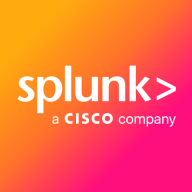

Splunk Observability Cloud and Sensu are competing products in the IT monitoring space. Splunk Observability Cloud seems to have an advantage in terms of customer support and pricing satisfaction based on comparative data, but Sensu stands out with its comprehensive feature set, making it a preferred choice for those focusing on capabilities.
Features: Splunk Observability Cloud's key features include real-time observability, superior data analytics, and advanced alerting. Sensu offers extensive monitoring integrations, automated workflows, and powerful event management. Sensu's broader integration capabilities distinguish it from Splunk, making it suitable for diverse environments.
Ease of Deployment and Customer Service: Splunk Observability Cloud offers a seamless deployment process with robust customer service, facilitating quick onboarding and support. Sensu, with its straightforward deployment model, requires less initial configuration but offers similar levels of effective customer service. While both provide efficient deployment and customer service, Splunk's centralized support system proves more comprehensive.
Pricing and ROI: Splunk Observability Cloud's setup cost is perceived as higher, yet it's often justified by substantial ROI stemming from its analytics capabilities. Sensu presents a cost-effective setup with balanced ROI due to its feature-rich platform and flexibility. Although Sensu is more budget-friendly, Splunk's advanced features deliver significant value for investment.
| Product | Market Share (%) |
|---|---|
| Splunk Observability Cloud | 1.3% |
| Sensu | 0.2% |
| Other | 98.5% |

| Company Size | Count |
|---|---|
| Small Business | 20 |
| Midsize Enterprise | 10 |
| Large Enterprise | 46 |
Sensu provides comprehensive monitoring and observability, enabling efficient tracking and management of system performance across diverse infrastructures. It offers robust features to help detect, diagnose, and resolve issues swiftly, ensuring optimal system functionality.
Sensu is designed for enterprises requiring powerful monitoring capabilities. It enables organizations to gather and analyze data from cloud environments, servers, containers, and more, helping detect irregularities and resolve issues promptly. Its flexibility and scalability cater to different monitoring needs, facilitating smooth integration with existing infrastructures and third-party applications.
What key features make Sensu effective?Sensu is implemented across various industries including technology, finance, and healthcare. Tech companies utilize it to manage complex IT stacks, ensuring uptime and performance. Financial institutions rely on its robust monitoring to maintain system integrity and security, while healthcare providers leverage its flexibility for managing patient data systems and ensuring compliance with standards.
Splunk Observability Cloud offers sophisticated log searching, data integration, and customizable dashboards. With rapid deployment and ease of use, this cloud service enhances monitoring capabilities across IT infrastructures for comprehensive end-to-end visibility.
Focused on enhancing performance management and security, Splunk Observability Cloud supports environments through its data visualization and analysis tools. Users appreciate its robust application performance monitoring and troubleshooting insights. However, improvements in integrations, interface customization, scalability, and automation are needed. Users find value in its capabilities for infrastructure and network monitoring, as well as log analytics, albeit cost considerations and better documentation are desired. Enhancements in real-time monitoring and network protection are also noted as areas for development.
What are the key features?In industries, Splunk Observability Cloud is implemented for security management by analyzing logs from detection systems, offering real-time alerts and troubleshooting for cloud-native applications. It is leveraged for machine data analysis, improving infrastructure visibility and supporting network and application performance management efforts.
We monitor all Network Monitoring Software reviews to prevent fraudulent reviews and keep review quality high. We do not post reviews by company employees or direct competitors. We validate each review for authenticity via cross-reference with LinkedIn, and personal follow-up with the reviewer when necessary.